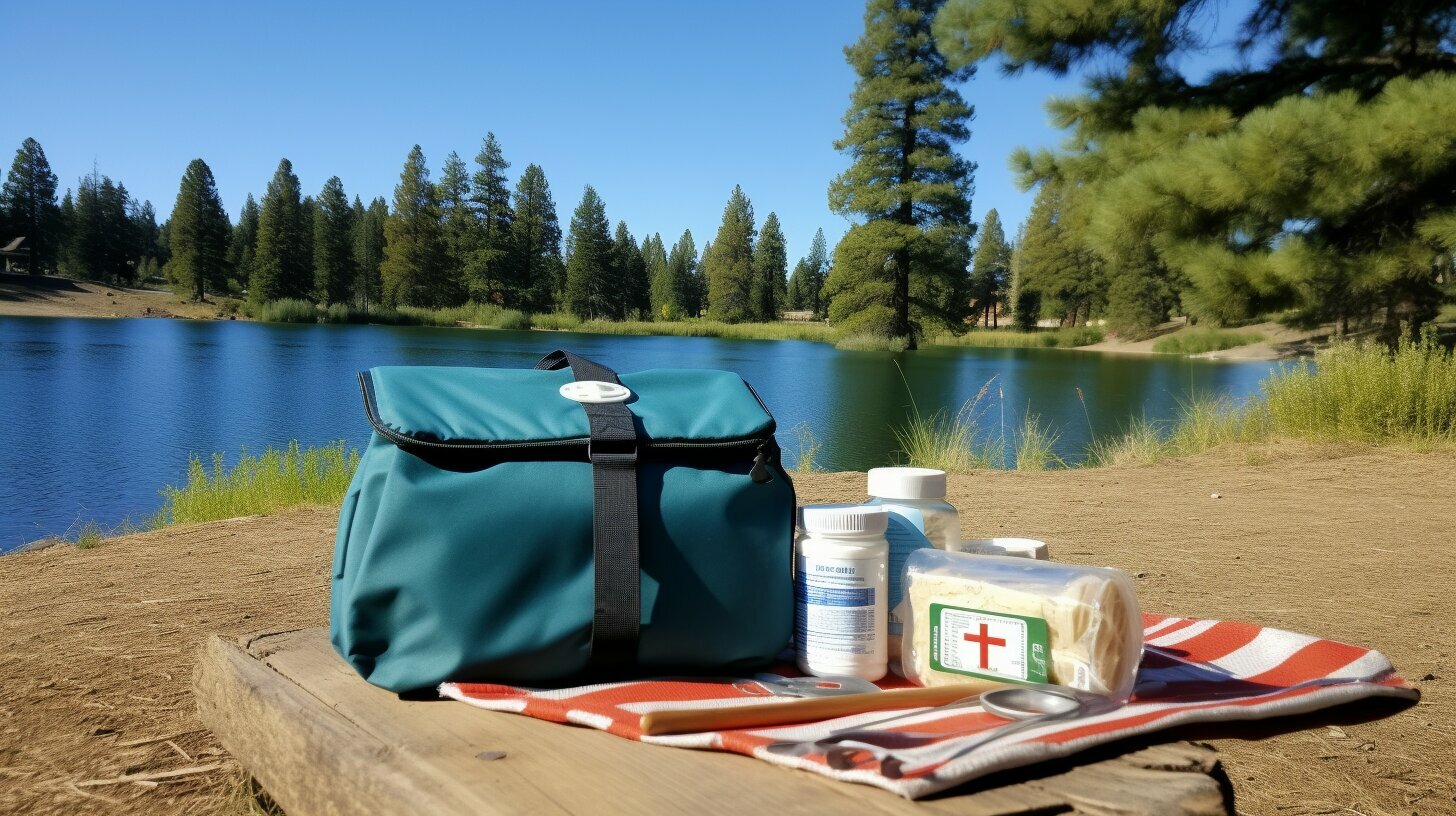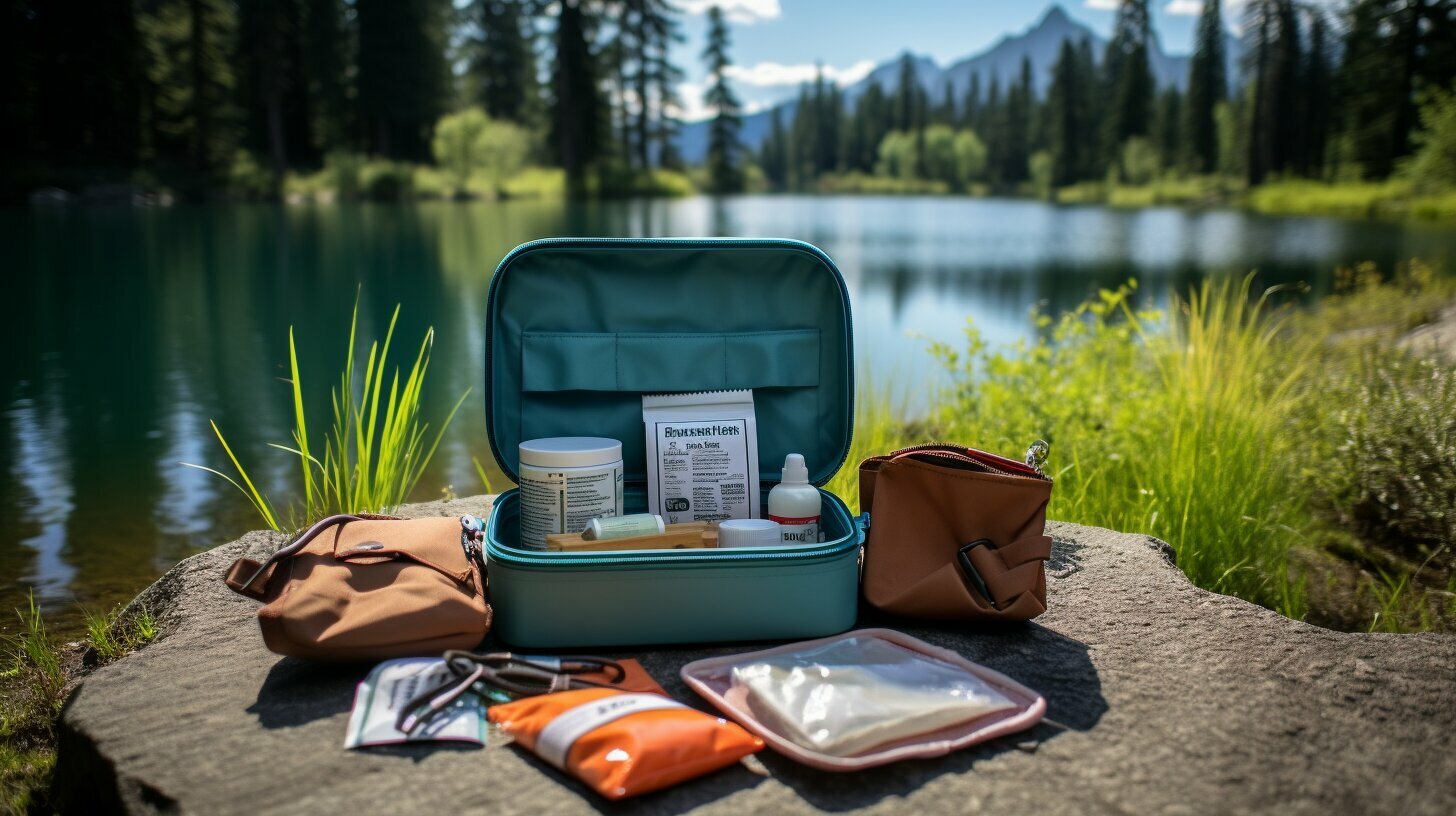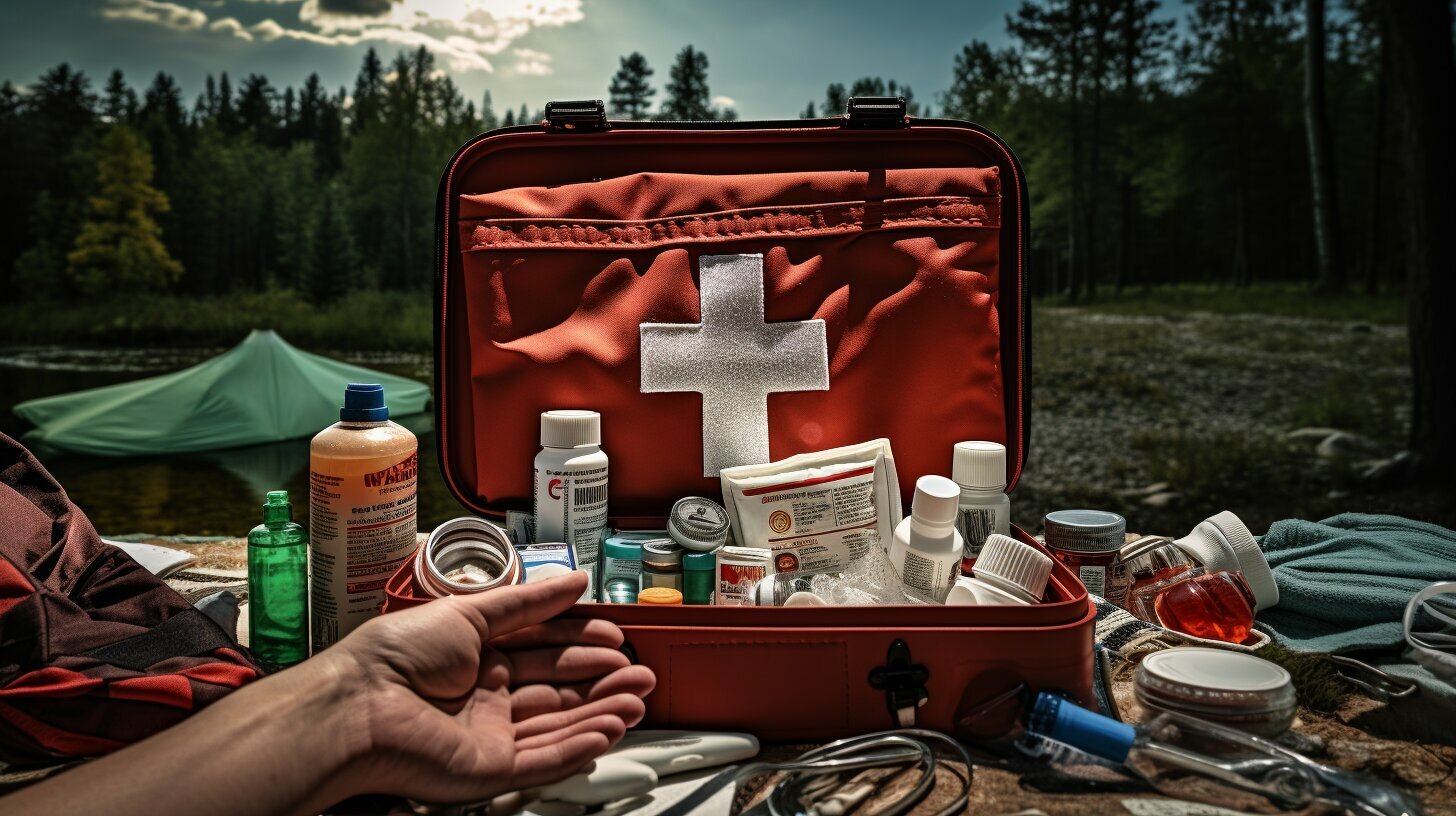When planning your camping trip, one crucial aspect of preparation is customising your camping first aid kit to ensure you have the necessary supplies for any potential emergencies. It’s important to consider the specific needs of your trip and the potential hazards you may encounter, such as minor burns, cuts, sprains, and nosebleeds. Different types of first aid kits are available, including those for general first aid, bleeding control, emergency response, biohazard protection, hygiene, and burn care.
Factors to consider when building a first aid kit include the size of your family, the location and risks of your home, the group size and location of athletic activities, and the group size, location, length, and activity of trips. You have the option to buy a pre-built kit, make your own kit, or buy a custom-built kit. The key to a well-organised first aid kit is to use different coloured compartments or packs, label each compartment, laminate a contents list, seal soft goods in plastic, and repackage ointments and liquids.
Anticipating possible problems is also essential. It’s important to include items to address major trauma, minor trauma, environmental challenges, and medical issues. Regularly checking and replenishing your first aid kit ensures that it remains up-to-date and complete.
To create a comprehensive camping first aid kit, it’s important to include a range of essential items that can address common injuries and ailments that may occur during your outdoor adventure. Whether you’re hiking in the woods or setting up camp by the beach, having the right supplies on hand can make a big difference in an emergency situation. Here are some must-have items to consider:
- Bandages and Dressings: Pack a variety of adhesive bandages, sterile gauze pads, and adhesive tape to treat minor cuts, scrapes, and blisters. These items will help protect wounds and promote healing.
- Tweezers and Scissors: Include a pair of tweezers for removing splinters or ticks, and sharp scissors for cutting tape or clothing in case of injuries.
- Pain Relief Medications: Over-the-counter pain relievers such as ibuprofen and acetaminophen can help alleviate headaches, muscle aches, and other minor pains that may arise during outdoor activities.
- Antiseptic Wipes and Ointments: Cleaning wounds with antiseptic wipes and applying antiseptic ointments can reduce the risk of infection. These items are essential for keeping wounds clean and preventing further complications.
- Insect Repellent and Sting Relief: Protect yourself from pesky bugs by including insect repellent containing DEET or other recommended ingredients. Additionally, pack sting relief products like hydrocortisone cream or afterbite lotion to alleviate discomfort in case of insect bites or stings.
Additional Items to Consider
In addition to the essentials mentioned above, it’s wise to include items that cater to your specific outdoor activities and potential risks. For example, if you’ll be near water, include waterproof bandages and a rescue whistle. If hiking in rugged terrain, consider a splint, compression bandage, or a snakebite kit. If you have known allergies, carry an epinephrine auto-injector for severe allergic reactions. Tailoring your kit to your unique needs ensures you’re prepared for any situation that may arise.
Remember, just having the items in your first aid kit is not enough. It’s important to stay familiar with the contents, regularly check for expired products, and replenish any used or missing items. A well-organized first aid kit will not only provide peace of mind during your camping trip but also offer the necessary care and support in the face of injuries and emergencies.
Image:

| Essential Items | Additional Items |
|---|---|
| Bandages and Dressings | Waterproof bandages |
| Tweezers and Scissors | Splint or compression bandage |
| Pain Relief Medications | Snakebite kit |
| Antiseptic Wipes and Ointments | Epinephrine auto-injector |
| Insect Repellent and Sting Relief | Rescue whistle |
Customizing Your First Aid Kit for Specific Hazards
Different camping environments present unique hazards, so it’s crucial to customize your first aid kit to address the specific risks associated with your chosen camping location. By tailoring your first aid kit to the potential hazards you may encounter, you can ensure that you are prepared for any medical emergencies that may arise during your outdoor adventure.
When customizing your camping first aid kit, it’s important to consider the specific hazards of your camping destination. For example, if you are camping in an area known for venomous snakes, you may want to include a snake bite kit in your first aid supplies. If you are camping in a remote location with limited access to medical facilities, it may be prudent to include extra medication for chronic conditions or a portable oxygen tank.
In addition to considering the hazards of your camping location, it’s also important to think about the type of activities you will be engaging in. If you are planning on hiking in rugged terrain, you may want to include items such as ankle supports or blister pads in your first aid kit. If you will be participating in water-based activities, it’s important to include items such as waterproof bandages or a rescue whistle.
By customizing your first aid kit to address the specific hazards and activities of your camping trip, you can ensure that you are well-prepared for any medical emergencies that may occur. Regularly check and replenish your first aid kit to ensure that it is up-to-date and complete, and always seek professional medical advice if needed.

| Essential Items | Specific Hazards |
|---|---|
| Bandages | Cuts and Scrapes |
| Antiseptic Ointment | Burns and Infections |
| Adhesive Tape | Sprains and Strains |
| Insect Repellent | Vector-borne Diseases |
| Sunscreen | Sunburn and UV Protection |
| Snake Bite Kit | Venomous Snake Bites |
| Allergy Medication | Allergic Reactions |
Remember, every camping trip is unique, and it’s important to assess the specific hazards and risks associated with your chosen location. By customizing your first aid kit accordingly, you can ensure that you are well-prepared and ready to handle any medical situation that may arise during your outdoor adventure. Stay safe and have a great camping experience!
Summary:
Different camping environments present unique hazards, so it’s crucial to customize your first aid kit to address the specific risks associated with your chosen camping location. Consider the hazards of your camping destination and the activities you will be engaging in. Include items such as snake bite kits, allergy medication, and sunscreen to tackle potential hazards. Regularly check and replenish your first aid kit to ensure it remains up-to-date and complete. By customizing your first aid kit, you can have peace of mind and enjoy a safe camping trip.
Tips for Organizing and Maintaining Your First Aid Kit
Keeping your camping first aid kit well-organized and regularly maintained is essential for quick and effective emergency response during your outdoor adventures. When it comes to organizing your kit, consider using different colored compartments or packs to categorize the items. This will help you quickly identify and locate the necessary supplies when needed.
Labeling each compartment is another useful tip. By clearly labeling the contents of each section, you can easily find what you’re looking for without wasting precious time during an emergency. Laminate a contents list as well, so it remains legible and protected from moisture or wear.
It is also important to seal soft goods, such as bandages and gauze, in plastic bags to keep them clean and dry. Additionally, repackage ointments and liquids in leak-proof containers to prevent any spills or contamination. By taking these steps, you can ensure that all the items in your first aid kit are in good condition and ready for use.
Regularly checking and replenishing your first aid kit is crucial to maintaining its effectiveness. Create a camping first aid kit checklist to help you keep track of the items that need to be restocked. Check expiration dates on medications and ointments, and replace any expired items promptly. Remember to include any specific medications or supplies that may be needed for individuals in your group with allergies or medical conditions.
| Organizational Tips | Maintenance Tips |
|---|---|
|
|
By following these tips, you can ensure that your camping first aid kit is well-organized, up-to-date, and ready to handle any emergencies that may arise during your outdoor adventures.
Anticipating and Addressing Potential Issues
When customizing your camping first aid kit, it’s crucial to anticipate potential issues and include the necessary supplies to address a range of emergencies and health concerns that may arise during your outdoor adventures. Being prepared for various scenarios can make a significant difference in ensuring the safety and well-being of yourself and your fellow campers.
One of the key considerations when customizing your kit is to include items for major trauma. This can include items such as sterile dressings, adhesive tape, and disposable gloves. In the event of a serious injury, having the appropriate supplies on hand can help stabilize the situation until professional medical help arrives.
Addressing minor trauma is also essential. Including items such as band-aids, gauze pads, and antiseptic wipes can help treat cuts, scrapes, and blisters that may occur during outdoor activities. Additionally, it’s important to be prepared for environmental challenges, such as insect bites, sunburns, or exposure to extreme temperatures. Packing insect repellent, sunscreen, and thermal blankets can help protect against these potential hazards.
Finally, considering potential medical issues is crucial. Having medications for allergies, pain relief, and stomach discomfort can help manage common ailments that may arise during camping. It’s also advisable to carry a first aid manual or guide to assist in administering proper care and treatment in different situations.
